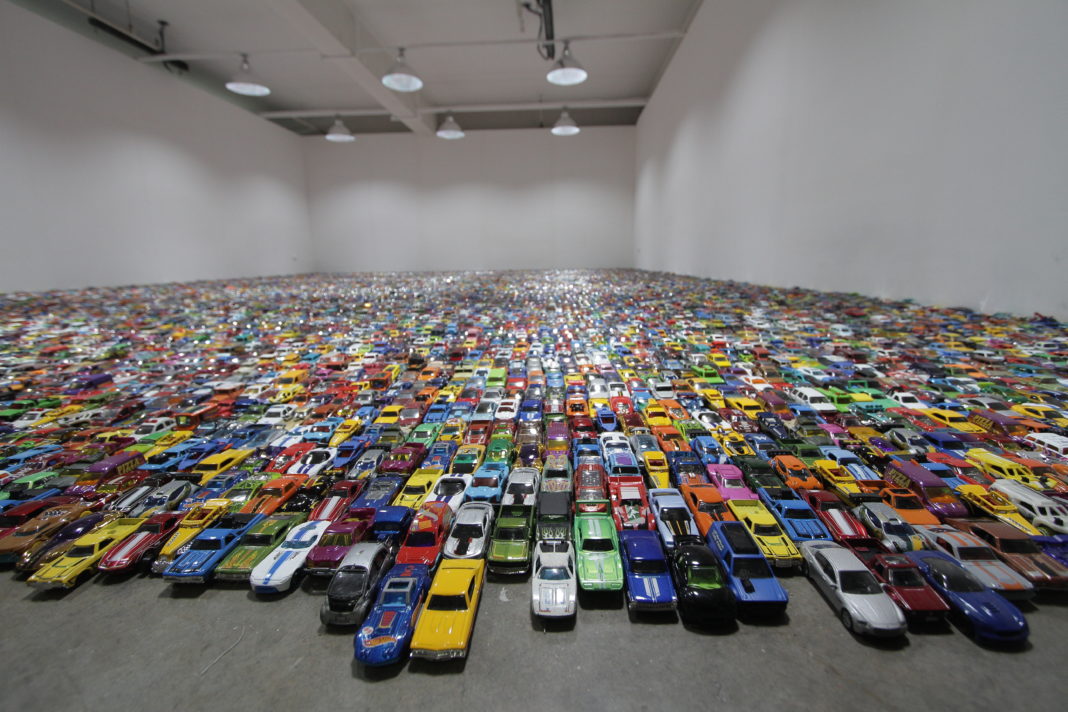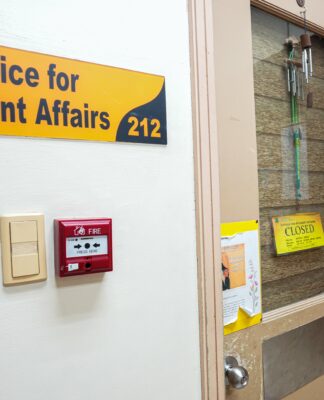Art Fair Philippines 2018 saw over 35,000 guests registering—more than six times the foot traffic since the fair’s inauguration in 2013—and going up and down the seven floors of The Link Carpark in Makati on March 1 to 4, viewing art exhibits and installations.
Some 13,000 square meters were given to gallery spaces, sponsors’ booths, and food and beverage concessions.
Organizers called the 2018 edition the “biggest and best show yet” of the art fair, with 51 local and international galleries participating.
“We’ve developed our educational thrust over the years to accommodate the growing and eager audience for this aspect of the fair,” said fair co-founder Dindin Araneta.
This year saw the debut of the ArtFairPH/PHOTO section, which featured photo-books tackling social issues. Mounted were works by street photographer Arthur “Weegee” Fellig.
Also mounted were the famous Cordillera photographs of Eduardo Masferre.
Veteran photographers Neal Oshima and Velasco Shaw were also featured.
UST Fine Arts alumnus Veejay Villafranca launched his photo book, “Signos,” in the group exhibit of documentary photographers titled “Provocations.”
Villafranca’s was a collection of black-and-white photos that showed the extreme changes in weather conditions around the country and their catastrophic aftermaths.
“[The photo-book] is a six-year work that tackles the issue of climate change and displaced communities all over the Philippines,” Villafranca told the Varsitarian.
Reliving the Pasay Manila’s Golden Gays, a non-profit organization established in 1970s to cater to elderly and homeless homosexuals, after their disbandment in 2012, Thomasian Geloy Concepcion rendered “Reynas Delas Flores: Manila Golden Gays,” a collection of photographs of the elderly group in their fashionable clothes.
Aside from photographers, seven UST artists works were also featured in the fair.
Renowned glass sculptor and Architecture alumnus Ramon Orlina graced this year’s Art Fair with “Seijaku,” a collaboration exhibition with French-Filipino textile artist Olivia d’ Aboville. The exhibit’s main piece was Orlina’s aqua blue optical glass sculpture which reflected their theme, “serenity in the midst of activity.”
Norberto Roldan ‘s installation, “Two Sisters and Two Aliens.” was a nostalgia piece composed of vintage items as a tribute to his mother. Old perfume bottles, lipsticks, picture frames, and flower vases filled the three wooden cabinets Roldan brought to the exhibit.
Roldan is known for his found-object installations that mimic Catholic altars in Philippine homes. He said the found objects provide a “narrative” that when put together, provide a “larger narrative” and with deeper significance.
In “Searching for the Center,” veteran printmaker Benjie Torrado Cabrera engraved a man’s facial proportions with an emphasis on its geometric style in a 48 x 18-inch mirror.
Noli Principe Manalang’s “Double Crossed,” a 44 x 18-inch painting, depicted the crucifixion of Christ with a yellow “Do Not Cross” tape.
In print artist Ambie Abaño’s “There are No White Clouds,” scattered cloud-shaped patterns were depicted on a woodcut canvass.
Alvin Zafra went digital with “Revolver,” a two-hour video showing the dismantling of a gun.
Antonio Victorio, another Thomasian, was one of several artists who collaborated in “Tira”, an installation of a decorated tent with broken objects inside, such as severed doll’s hands. Two major images were painted on the tent; one of a sunrise and another of a sunset.
















